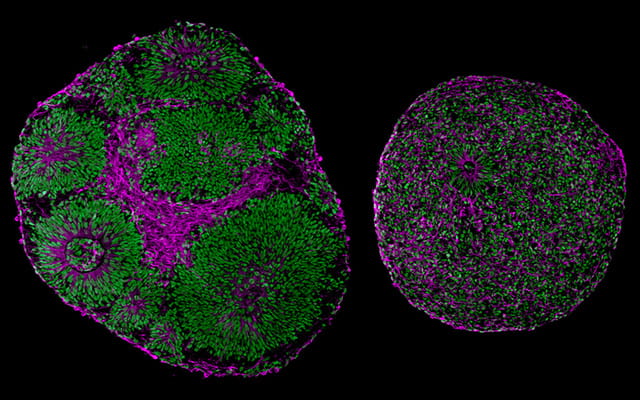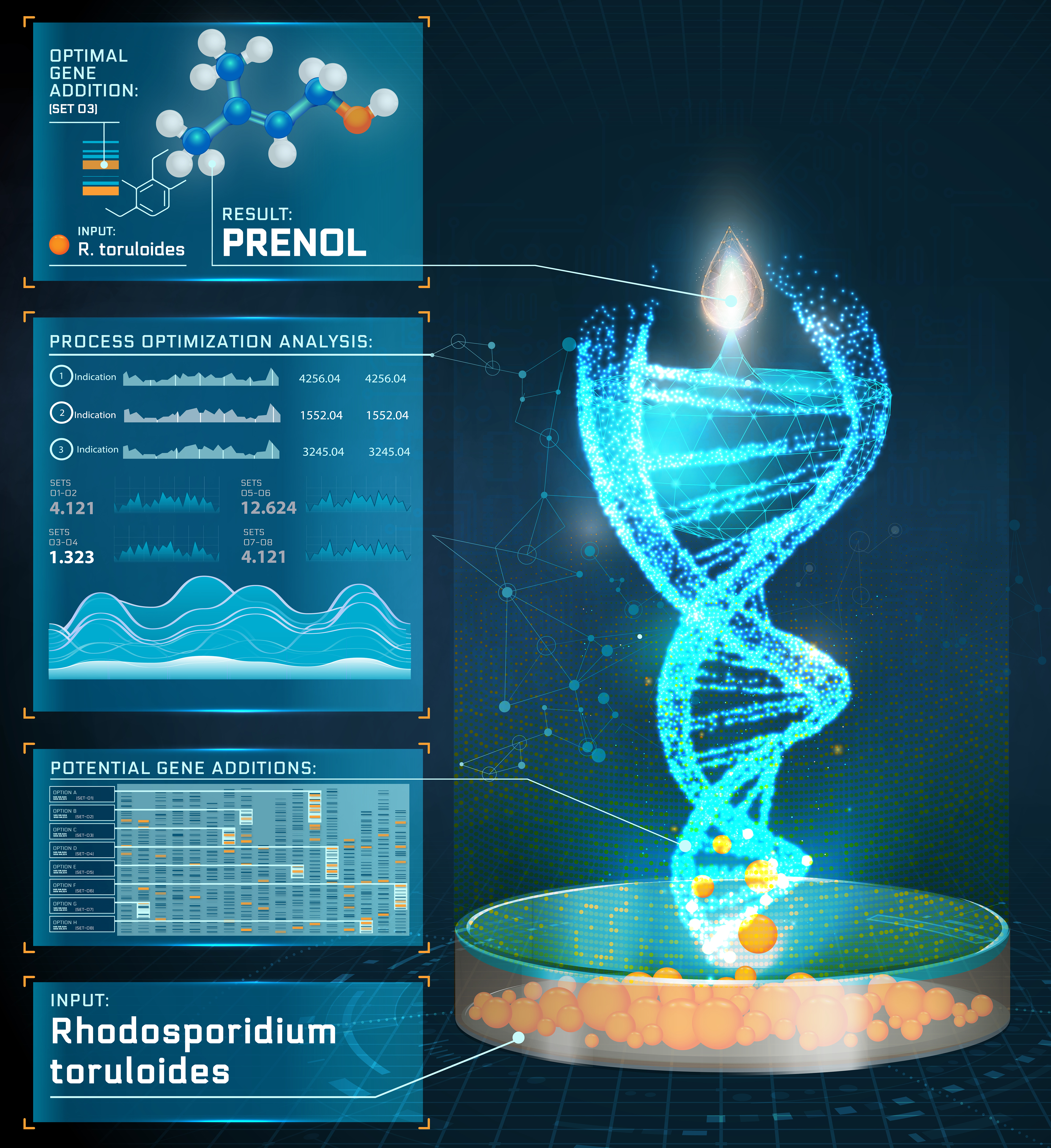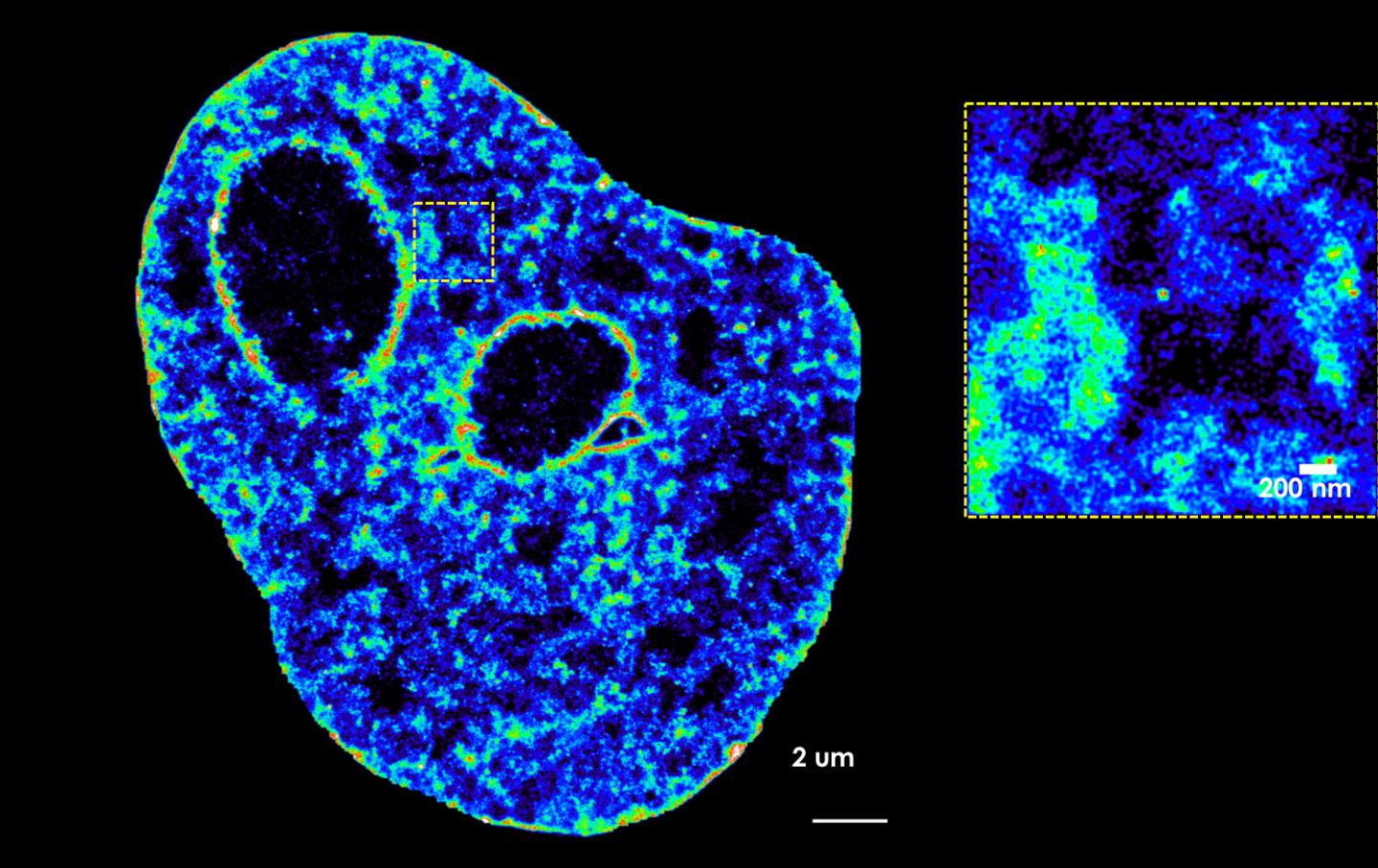The Regenerative Medicine Hub continues to grow and attract top talent with the addition of Ron Hann, PhD, a former senior level official with the Department of Defense.
Tag: Biotechnology

UC San Diego’s Astrobiotechnology Hub to Drive Drug Discovery in Space
UC San Diego’s new Astrobiotechnology Hub brings together leaders in academia, biotechnology and aerospace industries under a united mission to advance stem cell science and commercialization in space.
Department of Energy Announces $80 Million for Research to Accelerate Innovations in Emerging Technologies
Today, the U.S. Department of Energy (DOE) announced $80 million, provided by the Office of Science, to support fundamental research to drive the innovation cycle in support of the Accelerate Innovations in Emerging Technologies (Accelerate) initiative.
Beans IN toast could revolutionise British diet
Researchers and chefs at the University of Reading aim to encourage British consumers and food producers to switch to bread containing faba beans (commonly known as broad beans), making it healthier and less damaging to the environment.
Scientists have enhanced polymeric material for tissue repair
In the new study the authors have examined how conditions under which an amino group attaches to the polymer (temperature and the amount of arginine) affect the resulting qualities of the polycaprolactone film
Jurata Thin Film Raises $5 Million Seed Round
Jurata Thin Film, a startup focused on stabilizing vaccines at ambient temperature has raised initial investment funds totaling $4.87 million to develop the technology.
UC San Diego Awarded $8M to Expand Stem Cell Therapy Clinical Trials
UC San Diego Alpha Stem Cell Clinic awarded $8M to expand clinical trials of novel stem cell therapies. The CIRM award will advance partnerships between academic and industry experts in San Diego to expedite clinical trials for patients with difficult-to-treat diseases.
Artificial Intelligence Makes Enzyme Engineering Easy
You can’t expect a pharmaceutical scientist to switch labs to the facilities available in a television studio and expect the same research output.
A new control system for synthetic genes
Using an approach based on CRISPR proteins, MIT researchers have developed a new way to precisely control the amount of a particular protein that is produced in mammalian cells.
New technique makes gene editing at scale possible in animals, turning years of work into days and making new kinds of genetic experiments possible
A new gene editing technique developed by University of Oregon researchers compresses what previously would have been years of work into just a few days, making new kinds of research possible in animal models.
DOE Announces $178 Million to Advance Bioenergy Technology
The U.S. Department of Energy (DOE) today announced $178 million for bioenergy research to advance sustainable technology breakthroughs that can improve public, health, help address climate change, improve food and agricultural production, and create more resilient supply chains. This funding will support cutting-edge biotechnology R&D of bioenergy crops, industrial microorganisms, and microbiomes. Alternative clean energy sources like bioenergy are playing a key role in reaching President Biden’s goal of a net-zero carbon economy by 2050.
Call for Papers – The International Halal Science and Technology Conference 2022 (IHSATEC): 15th Halal Science Industry and Business (HAISB)
The Halal Science Center, Chulalongkorn University, and Research Synergy Foundation, invites all to attend “The International Halal Science and Technology Conference 2022 (IHSATEC): 15th Halal Science Industry and Business (HAISB)” and has opened up a call for papers. The conference sessions will be on December 15-16, 2022 at Chulalongkorn University, Bangkok, Thailand.
White, red, and blue signals alert you to dangerous germs!
Osaka Metropolitan University scientists have developed a simple, rapid method to simultaneously identify multiple food poisoning bacteria, based on color differences in the scattered light by nanometer-scaled organic metal nanohybrid structures (NHs) that bind via antibodies to those bacteria.
Eliksa Therapeutics launched with University of Utah’s commercial and clinical-stage regenerative medicine technology
Eliksa Therapeutics, a regenerative medicine company developing novel therapeutics for a range of debilitating diseases, announced today it has launched with investments from the University of Utah (U) and Militia Hill Ventures (MHV) to develop and commercialize multiple clinical programs using the regenerative medicine technology developed at the U.
Turning white blood cells into medicinal microrobots with light
Researchers reporting in ACS Central Science have used lasers to precisely control neutrophils — a type of white blood cell — as a natural, biocompatible microrobot in living fish. The “neutrobots” performed multiple tasks, showing they could someday deliver drugs to precise locations in the body.
‘You Are What You Eat,’ and Now Researchers Know Exactly What You’re Eating
UC San Diego researchers describe a new method to identify all of the unidentified molecules derived from food, providing a direct way to link molecules in diet to health outcomes.
A World First: For the First Time, a Human Liver Was Treated in a Machine and Then Successfully Transplanted
The Liver4Life research team owes its perfusion machine, which was developed in house, to the fact that it became possible to implant a human organ into a patient after a storage period of three days outside a body.
5 clean energy startups chosen for Argonne’s Chain Reaction Innovations
Seven new innovators representing five clean energy startups will join Chain Reaction Innovations, Argonne National Laboratory’s entrepreneurship program, as part of the elite program’s sixth cohort.
FAU Marine Science Trailblazer Receives Lifetime Achievement Award
Shirley Pomponi, Ph.D., an ocean explorer, aquanaut and marine biotechnologist, will receive the Society for In Vitro Biology’s (SIVB) highest award – the 2022 “Lifetime Achievement Award.” She has made pioneering, scientific advances and contributions to marine invertebrate biotechnology, biological oceanography and national marine policy.

Gene Therapy Reverses Effects of Autism-Linked Mutation in Brain Organoids
UC San Diego scientists use lab-grown human brain tissue to identify neural abnormalities in Pitt-Hopkins Syndrome and show gene therapy tools can rescue neural structure and function.
Cannabinoids from amoebae
A research team at the Leibniz Institute for Natural Product Research and Infection Biology – Hans Knöll Institute (Leibniz-HKI) in Jena, Germany has developed a new method to produce complex natural products in amoebae.

Pathways to production
Biologists at Sandia National Laboratories developed comprehensive software that will help scientists in a variety of industries create engineered chemicals more quickly and easily. Sandia is now looking to license the software for commercial use, researchers said.
A cocoa bean’s “fingerprint” could help trace chocolate bars back to their farm of origin, finds a new study
A new study from the University of Surrey has revealed that biotechnology could be the missing ingredient in helping cocoa farmers get a better deal for their beans.
University of Washington and Microsoft researchers develop ‘nanopore-tal’ that enables cells to talk to computers
University of Washington and Microsoft researchers have introduced a new class of reporter proteins that can be directly read by a commercially available nanopore sensing device.
Researchers invent world’s smallest biomechanical linkage
Researchers at Princeton University have built the world’s smallest mechanically interlocked biological structure, a deceptively simple two-ring chain made from tiny strands of amino acids called peptides.
New technique illuminates DNA helix
Cornell researchers have identified a new way to measure DNA torsional stiffness – how much resistance the helix offers when twisted – information that can potentially shed light on how cells work.
New technique illuminates DNA helix
Cornell researchers have identified a new way to measure DNA torsional stiffness – how much resistance the helix offers when twisted – information that can potentially shed light on how cells work.
RegeneratOR Workforce Development Receives NSF Award
With the recent announcement of the RegeneratOR Test Bed to support regenerative medicine start up companies, the Wake Forest Institute for Regenerative Medicine (WFIRM) and the RegenMed Development Organization (RemDO) are embarking on the next step – to help create the future workforce.
New US and German collaboration aims to produce green hydrogen more efficiently
Through a new award program, the U.S. National Science Foundation and the Deutsche Forschungsgemeinschaft (German Research Foundation, DFG) have joined forces to award the University of Illinois Urbana-Champaign and Technical University of Darmstadt a three-year $720,000 research grant ($500,000 from…
Bio-based coating for wood outperforms traditional synthetic options
Researchers turn a non-toxic residue into wood coating that resists abrasion, stain, and sunlight.
Device cracks milk protein
‘Refolding’ molecules to support medical solutions
Reverse optogenetic tool developed
A new optogenetic tool, a protein that can be controlled by light, has been characterized by researchers at Ruhr-Universität Bochum (RUB). They used an opsin – a protein that occurs in the brain and eyes – from zebrafish and introduced…
New organ-on-a-chip finds crucial interaction between blood, ovarian cancer tumors
Team identifies crucial interaction between platelets and tumors for the first time

Untwisting DNA Reveals New Force That Shapes Genomes
Advances in microscopy have enabled researchers to picture loops of DNA strands for the first time.
DeepMind and EMBL release the most complete database of predicted 3D structures of human proteins
Partners use AlphaFold, the AI system recognised last year as a solution to the protein structure prediction problem, to release more than 350,000 protein structure predictions including the entire human proteome to the scientific community
Synlogic publishes papers in Nature journals demonstrating proof-of-mechanism and potential of synth
Data show dose-responsive, non-saturated increases in gastrointestinal consumption of Phe in humans by SYNB1618 — SYNB1618 Phase 2 study in patients with PKU ongoing with proof-of-concept readout anticipated in 2H 2021 — Phase 1 study of SYNB1934
Stanford researchers develop tool to drastically speed up the study of enzymes
For much of human history, animals and plants were perceived to follow a different set of rules than the rest of the universe. In the 18th and 19th centuries, this culminated in a belief that living organisms were infused by…
Smartphone screens effective sensors for soil or water contamination
The touchscreen technology used in billions of smartphones and tablets could also be used as a powerful sensor, without the need for any modifications. Researchers from the University of Cambridge have demonstrated how a typical touchscreen could be used to…
Untwisting DNA reveals new force that shapes genomes
Transcription generates a force that moves across DNA strands like ripples through water
SMART breakthrough in detection of SARS-CoV-2 variant in wastewater
SMART researchers have developed an innovative method to detect and quantify the more transmissible B.1.1.7 (Alpha) variant of concern via wastewater epidemiology
New method predicts COVID-19 severity, could help with hospital triage
During the height of the pandemic, some hospitals were overwhelmed with patients seeking treatment for COVID-19. This situation could happen again during future outbreaks, especially with SARS-CoV-2 variants of concern on the rise. Now, researchers reporting in ACS’ Analytical Chemistry…
Thumb-sized device quickly ‘sniffs out’ bad breath
No one wants bad breath — not when visiting friends and family, at a job interview, and especially not on a first date. Smelly breath can make things awkward, but it also is a natural warning sign, indicating that serious…
A novel method for the rapid repair of peripheral nerve injuries
Bar-Ilan University researchers have developed nerve guidance conduits filled with smart gel that accelerate regeneration of torn nerve fibers
Dynamic heart model mimics hemodynamic loads, advances engineered heart tissue technology
Efforts to understand cardiac disease progression and develop therapeutic tissues that can repair the human heart are just a few areas of focus for the Feinberg research group at Carnegie Mellon University. The group’s latest dynamic model, created in partnership…
Take two: Integrating neuronal perspectives for richer results
Every brain function, from standing up to deciding what to have for dinner, involves neurons interacting. Studies focused on neuronal interactions extend across domains in neuroscience, primarily using the approaches of spike count correlation or dimensionality reduction. Pioneering research from…
How a unique sponge ‘goes with the flow’ could improve man-made structures
Collaborative project taps one of the world’s most powerful supercomputers to reveal the water-bending skills of the Venus basket sponge. Insights could have implications for man-made craft and structures
A substance from Saussurea controversa will help bone tissue regeneration
Metabolic bone diseases, including osteoporosis, when bones lose their mass and become so fragile that they could be damaged while sneezing or under little stress, are called the silent epidemic of the 21st century. A person does not even know…
NIH Director Francis Collins and NASA Astronaut Kate Rubins to keynote joint session at ISSRDC
KENNEDY SPACE CENTER (FL), July 20, 2021 – The 2021 International Space Station Research and Development Conference (ISSRDC) will include a virtual keynote session that will feature two key science figures: National Institutes of Health (NIH) Director Dr. Francis Collins…
To die or not to die in response to stress, a decision regulated by MK2 protein levels
Living organisms are often exposed to stress stimuli generated either by external or internal factors, and they need to respond accordingly. At a cellular level, stress usually triggers the activation of survival pathways that contribute to the recovery of cell…
The international ENABLE conferences get the green light for another four years
The ENABLE international conferences, which have been held annually since 2017, are scientific gatherings organised by and for young researchers that seek to ensure the next generation of scientific leaders. Initially funded by the European Commission’s Horizon2020 programme, the first…